“ First of all, we need a newspaper, without it we cannot systematically carry out a comprehensive and principled propaganda campaign ” - from that affirmation of leader Nguyen Ai Quoc, on June 21, 1925, a newspaper named Thanh Nien was born, carrying the mission of “ being a mouthpiece with the task of collective propaganda” . And it was also from Thanh Nien that the Vietnamese Revolutionary Press was officially born…
From the pain of "Having a mouth but not being able to speak, having thoughts but not being able to express"
“...Having a mouth but not being able to speak, having an idea but not being able to express it, that is the fate of 25 million of our compatriots. In the history of our press over the past few decades, journalists have been completely deaf and mute. They are the people the French government trained for our press. Every time we pick up a pen or a newspaper, we cannot help but feel ashamed and heartbroken!” Those were the words of lamentation written by the culturalist, historian, and journalist Tran Huy Lieu - one of the typical Vietnamese intellectuals of the 20th century - to bid farewell to readers at the time when Phap Viet Nhat Gia - the newspaper he founded, which had contributed to exposing the "French-Vietnamese harmony" policy of the Constitutionalist Party led by Bui Quang Chieu, was suspended in 1927 and he himself was imprisoned for 6 months in Saigon prison for the crime of being a member of a patriotic organization.
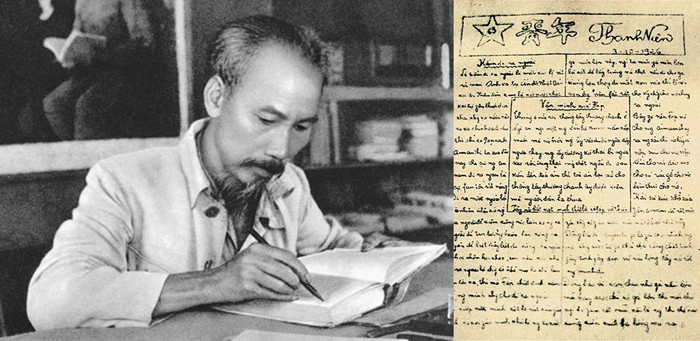
President Ho Chi Minh founded Thanh Nien newspaper, the first revolutionary newspaper of Vietnam.
| “The suffering of the Annamese people has reached its limit! No other country has such suffering. My fellow countrymen! Freedom is a gift from God. Those who are not free would rather die. Wake up and break the cage that the French are locking us up in. My fellow countrymen! (Thanh Nien Newspaper No. 63, October 3, 1926). |
As editor Tran Huy Lieu said, "the history of our press has gone through several decades", long before the Phap Viet Nhat Gia newspaper, around the end of the 19th century, the history of the country's press has recorded the presence of many press publications published in Vietnam. In particular, before 1881, the press in Vietnam had French-language newspapers such as the official newspaper Le Bulletin Officiel de l'Expédition de la Cochinchine (Southern Expedition Official Gazette - BOEC), Courrier de Saigon (Saigon News) ..., Chinese-language newspapers such as Xa Thon Official Gazette (Le Bulletin des Communes) ... But it was not until Gia Dinh Newspaper (1865-1909) that the history of the press recorded this as the first national language (Vietnamese) newspaper in the South, and also the first in the whole country. However, Gia Dinh Newspaper was essentially a propaganda and law dissemination agency established by the French colonial government in the colony of Cochinchina. All the people who participated in writing Gia Dinh Newspaper were civil servants serving the French colonial government.
After Gia Dinh Newspaper, in the last decades of the 19th century, many more newspapers appeared, but those published in Vietnamese were very few. In the 1920s of the 20th century, Vietnamese newspapers developed significantly, although the number of French newspapers published in Vietnam still dominated. According to many documents, from 1865 to the end of 1918, there were about 20 Vietnamese newspapers published nationwide, including: Gia Dinh Newspaper (1865-1910), Nhat Trinh Nam Ky (1883 - ?), Thong Loai Khoa Trinh (1888-1889), Dai Nam Dang Co Tung Newspaper (1892-1907), Phan Yen Newspaper (1898-1899), Nong Co Min Dam (1901- 1924), Dai Viet Tan Newspaper (1905-1908), Nhat Bao Tinh (1905 -?), Luc Tinh Tan Van (1907-1944), Nam Ky Dia Phan (1908-1943), An Ha Daily Newspaper (1917- 1933), Dong Duong Tap Chi (1913-1919), Trung Bac Tan Van (1913-1941), Cong Luan Newspaper (1916-1939), Nam Trung Daily Newspaper (1917-1921), Nam Phong Magazine (1917-1934), Nam Viet Te Gia Daily Newspaper (1917-1918), Dai Viet Magazine (1/1918-7/1918), Nu Gioi Chung (2/1918-7/1918), Quoc Dan Dien Dan (10/1918-10/1919), Den Nha Nam (12/1918-1/1919)... After that, the years 1923-1926, can be considered a period of quite strong development of the Southern press with newspapers such as Jeune Annam (Young Annam), La Cloche Fêlée (The Creepy Bell), L'Indochine (Indochina), Phap Viet Nhat Gia, Dong Phap Thoi Bao...
The most easily noted thing about the Vietnamese press in the late 19th and early 20th centuries is that although there were still many newspapers, as researcher Nguyen Ngu Y said, during the period of dependence (led by the French), there gradually appeared newspapers that dared to raise the voice of resistance of an oppressed and colonized people, dared to express a clear and bold stance, dared to create public confrontations with the colonial regime even though many editors were continuously arrested by the government and many newspapers were required to cease publication. Notable among them is La Cloche Fêlée (The Creaking Bell) when it publicly declared in the newspaper: La Cloche Fêlée, the creaking bell, this musical instrument with a discordant sound will debate until it is smashed to pieces... Even though we know that we might be thrown in jail, we are not afraid... With a clear platform, we are ready to live and die with it as before and accept sacrificing everything for the future... Even though, in the end, due to the fierce suppression and sabotage of the colonial government, La Cloche Fêlée (The Creaking Bell) had to be suspended.
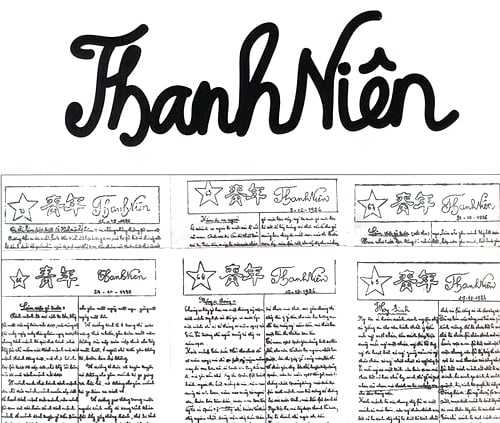
“Thanh Nien” - the first revolutionary newspaper of Vietnam.
“ ... Having a mouth but not being able to speak, having thoughts but not being able to express them” - Mr. Tran Huy Lieu's exclamation comes from that reality of the Vietnamese press at that time. And leader Nguyen Ai Quoc, in 1924, despite being thousands of miles away from his country, had to exclaim: “ In the middle of the 20th century, in a country with 20 million people, there is not a single newspaper! Can you imagine that? There is not a single newspaper in our mother tongue. The French government decided that no Annamese newspaper could be published without the governor's permission... I call it a political , economic or literary newspaper like we see in Europe and some other Asian countries, not a newspaper established by the government and assigned to its henchmen to control, only talking about the weather, praising the powerful people of the time, telling nonsense stories, praising the merits of civilization to lull the people to sleep. Newspapers that poison people like that, in Indochina there are three or four of them.”
The need for a revolutionary newspaper
Right from the time he was still active in France, with the spirit: For a revolution to succeed, first of all, there must be a revolutionary party... Only when the party is strong can the revolution succeed, Nguyen Ai Quoc made constant efforts to promote all-round preparations to establish a communist party in a colony so that he could assume the leadership position of the Vietnamese people in the struggle for national liberation. However, he also clearly identified that in the 1920s, it was not possible to establish a Communist Party in Vietnam for many reasons. First of all, it was necessary to build the first nuclei for the Vietnamese revolution, and they would spread the views and doctrines of Marxism-Leninism into Vietnam, helping the masses, especially the Vietnamese working class, understand the historical mission and responsibility in the task of national liberation.
From that perspective, in June 1925, in Guangzhou, Nguyen Ai Quoc and the youth group “Communist League” decided to establish the Vietnam Revolutionary Youth Association to expand the organization and prepare to establish a base in the country. At that time, leader Nguyen Ai Quoc affirmed that the first practical step towards establishing a political organization as desired was to immediately establish a newspaper as a mouthpiece with the task of collective propaganda. Without a newspaper, it would be impossible to convey policies and viewpoints to grassroots organizations and members, especially in conditions of secret operations. More importantly, that newspaper – according to Lenin’s concept – would be like a part of a giant forge that would fan every spark of class struggle and of people’s anger into a big fire.
Youth and historical mission
And the newspaper with the historic mission of "fanning anger into a big fire" was named Thanh Nien.
On June 21, 1925, after a period of preparation by Nguyen Ai Quoc, the first issue of the Thanh Nien weekly newspaper was published. As the organ of the Vietnam Revolutionary Youth Association, Nguyen Ai Quoc chose the name of the newspaper as Thanh Nien. The "editorial office" was house number 13 (now number 248 - 250), Van Minh Street, Guangzhou City, Guangdong Province. This was also the place where the Vietnam Revolutionary Youth Association was founded and the headquarters.
The newspaper is published every Sunday, about 18 x 24cm in size, with 4-page numbers, 2-page numbers, written with a steel pen on wax paper. The newspaper has sections: editorials, comments, women's talk, questions and answers, poetry, criticism, answers to readers... Thanh Nien newspaper was first published once a week with over 100 copies. Later, due to many difficulties, each issue was published 3 to 5 weeks apart from the previous issue. The newspaper's cufflinks have the two words Thanh Nien in Chinese and Vietnamese. The number of each newspaper is written in a five-pointed star.
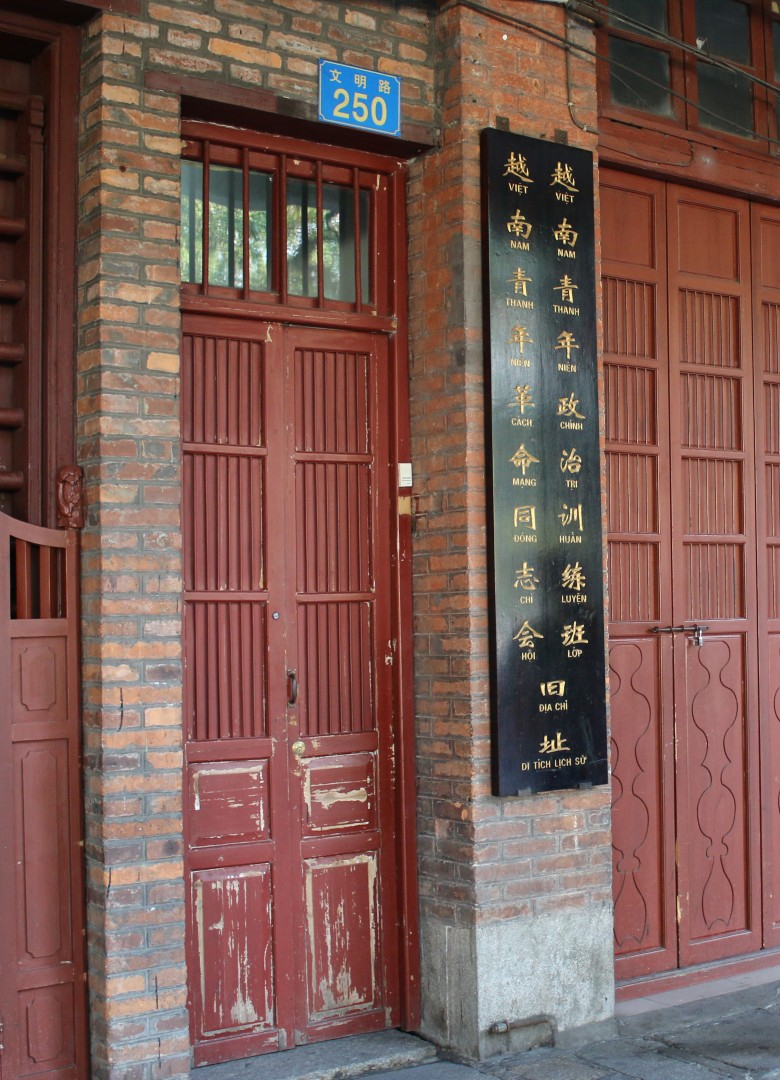
House No. 13 (now 248-250) Van Minh Street, Guangzhou City, Guangdong Province, China. (Photo: Ho Chi Minh Museum).
| “Revolution is the transformation of bad into good, it is the root of all activities, thanks to which an oppressed nation is liberated and becomes rich and strong. The history of other countries has taught us that only by the path of revolution can we move towards the formation of a government with better education, industry, and social organization” (Thanh Nien Newspaper No. 2, June 28, 1925). |
The basic political content of Thanh Nien Newspaper is: Clearly pointing out the irreconcilable contradiction between our nation and the colonial nations with imperialism; Affirming the path of the Vietnamese revolution; The revolutionary force is the entire people, with workers and peasants as the foundation; Revolutionaries must sacrifice for the cause and must have the right revolutionary method; The Communist Party must lead and organize the revolutionary masses; The Vietnamese revolution must follow the path of the Russian October Revolution to achieve victory. In the issues, most of the articles have the purpose of deepening hatred for the invaders, stimulating the spirit of national independence and patriotism to encourage the people to rise up and make revolution.
Not only was he the founder, Nguyen Ai Quoc was also the main writer of Thanh Nien, writing many articles for the newspaper. He also drew critical and satirical cartoons for the newspaper. In the newspaper, people saw many different pen names of Nguyen Ai Quoc: Corporal, Captain, Huong Mong, HT, HL... Besides Nguyen Ai Quoc, there were also active collaborators such as Ho Tung Mau, Le Hong Son, Le Hong Phong, Truong Van Linh... The authors of the articles and the people who produced the newspaper all tried to use the simplest, most familiar, and easiest-to-understand words possible to fully convey information to readers.
Only three to five weeks after publication, Thanh Bien Newspaper was sent to Hong Kong (China) and Shanghai, from where it was sent back to the country by a secret liaison system on shipping routes. The work of delivering the newspaper was undertaken by patriotic Vietnamese sailors. The newspaper was secretly circulated in the branches of the Vietnam Revolutionary Youth League, among those who sympathized with the League, and in the revolutionary bases of overseas Vietnamese in France, Thailand, and China. In Vietnam, the revolutionary bases hand-copied many copies of Thanh Nien Newspaper and passed them on to their comrades to read and to convey to the people. The Vietnam Revolutionary Youth League in the country also used the newspaper to mobilize, propagate, enlighten, and train members.
“ It must be said right away that Nguyen Ai Quoc’s newspaper was read by all party members abroad, in the country and by a large number of sympathizers. These readers not only read Thanh Nien themselves but also copied it many times for others to read,” commented Louis Marty, the chief French secret agent in Indochina. It was also Louis Marty who, in a report sent to the French Colonial Ministry, commented: The owner of this newspaper was extremely wise. During the first 60 issues, he did not reveal the Marxist character of his newspaper, only talking about patriotism, nationalism and hatred of our colonial regime. Then, from issue 61 (December 18, 1926), he led readers to the conclusion: to gain independence, there was no other way than to follow Lenin and the Third International, to establish the Communist Party…
Thanh Nien Newspaper was published regularly for 88 issues until April 1927 when the situation of the Chinese revolution changed unfavorably, and Vietnamese revolutionary activities in China had to be moved underground. Nguyen Ai Quoc was forced to leave Guangzhou for Wuhan and then to the Soviet Union. When the Vietnam Revolutionary Youth League Headquarters moved to Hong Kong, Thanh Nien Newspaper continued to be published there, but the time interval between issues was irregular and the circulation was also more secret because of the surveillance of French secret police and the strict suppression of the local government. The last issues were not printed on wax paper but were published in the form of typewritten pages. By the end of 1929, the Vietnam Revolutionary Youth League Headquarters ceased operations, and the newspaper also ceased publication.
Currently, the relic of house number 13 (now number 248 - 250), Van Minh street, Guangzhou city, Guangdong province, China - where the first issue of Thanh Nien newspaper was published is highly respected, cared for, invested in, and renovated many times. Since 1971, the People's Republic of China decided to keep this address as a memorial site of President Ho Chi Minh. The relic is under the management of the Guangdong Revolutionary Museum.
With a total of about 200 issues published, compared to other public newspapers of the Party during the Democratic Front period (1936 - 1939): Dan Chung published 80 issues, Lao Dong Newspaper published 30 issues, Tien Phong Newspaper published only 8 issues, Thanh Nien Newspaper published the most issues. Thanh Nien Newspaper completed its historical mission: becoming a compass for patriotic Vietnamese youth during this period, playing an important role in propaganda, preparing ideologically, theoretically and organizationally for the birth of communist groups in late 1929 and the founding of the Communist Party of Vietnam in early 1930. As Nguyen Ai Quoc with the pen name "Dieu Huong" wrote in a poem printed in Thanh Nien Newspaper No. 64: "If you make a revolution, don't be messy/When we make a revolution, we must reach the end/First, we must gain power for the whole country,/Then, we will revolutionize the whole sky".
And more than that, after Thanh Nien Newspaper opened the way, leader Nguyen Ai Quoc established Kong Nong Newspaper (1926), Linh Kach Menh Newspaper (1927), officially opening the flow of Vietnamese Revolutionary Journalism. That is why it is said that Thanh Nien Newspaper opened a new stream of journalism - Vietnamese Revolutionary Journalism.
Ha Anh
Source



![[Photo] Nearly 3,000 students moved by stories about soldiers](https://vphoto.vietnam.vn/thumb/1200x675/vietnam/resource/IMAGE/2025/5/17/21da57c8241e42438b423eaa37215e0e)
![[Photo] More than 17,000 candidates participate in the 2025 SPT Competency Assessment Test of Hanoi National University of Education](https://vphoto.vietnam.vn/thumb/1200x675/vietnam/resource/IMAGE/2025/5/17/e538d9a1636c407cbb211b314e6303fd)
![[Photo] Prime Minister Pham Minh Chinh chairs meeting on science and technology development](https://vphoto.vietnam.vn/thumb/1200x675/vietnam/resource/IMAGE/2025/5/17/ae80dd74c384439789b12013c738a045)
![[Photo] Readers line up to visit the photo exhibition and receive a special publication commemorating the 135th birthday of President Ho Chi Minh at Nhan Dan Newspaper](https://vphoto.vietnam.vn/thumb/1200x675/vietnam/resource/IMAGE/2025/5/17/85b3197fc6bd43e6a9ee4db15101005b)














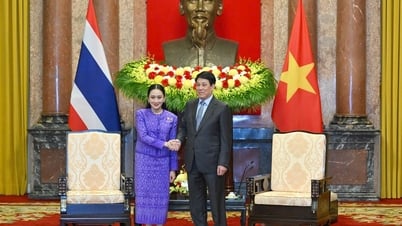

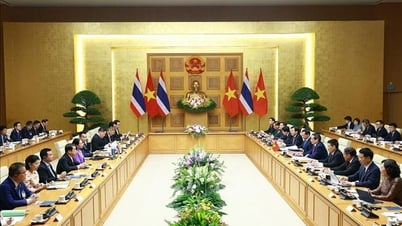
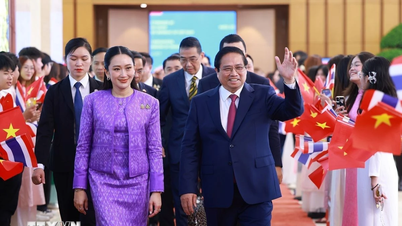

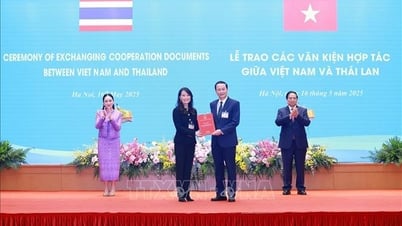
































































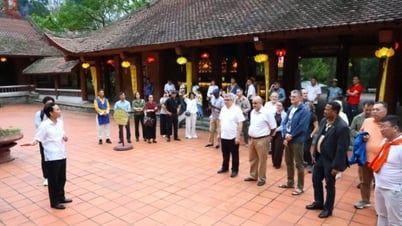

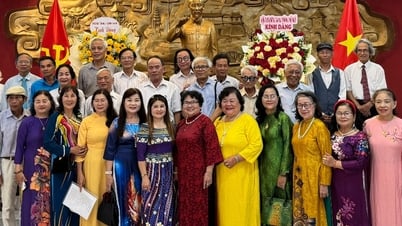


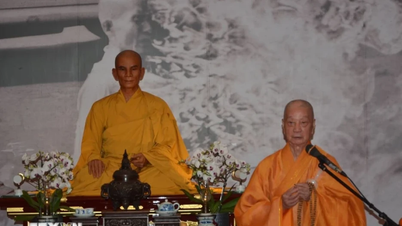











Comment (0)